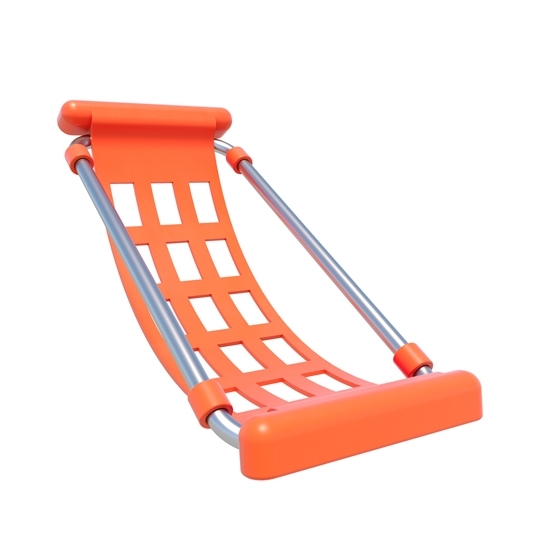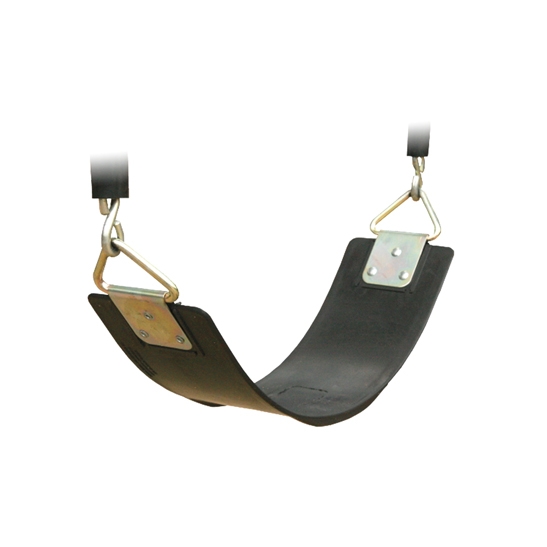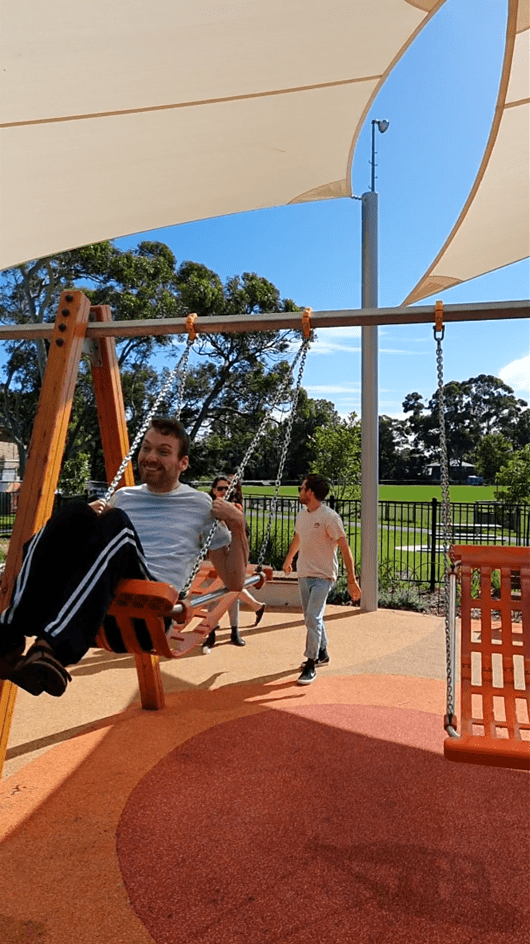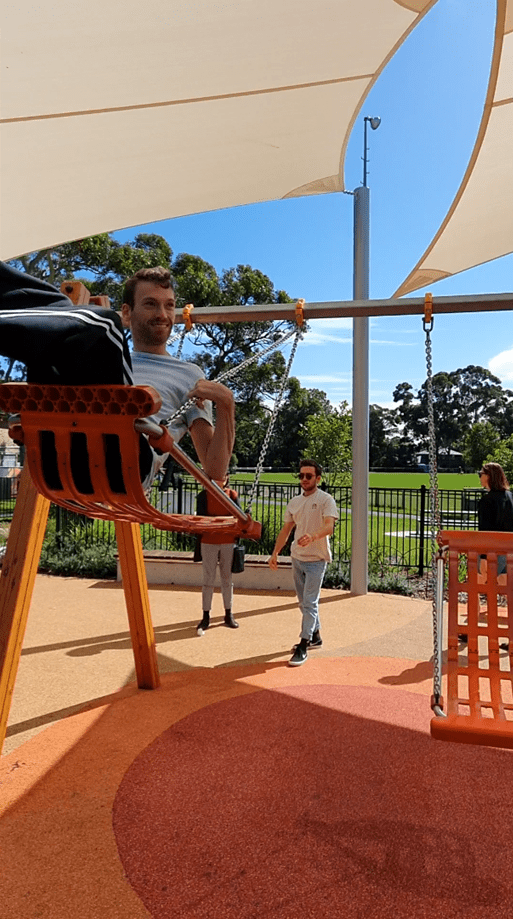A virtually impossible task, you might say! But when we’re fighting to justify the choice of a $3500 inclusive swing, compared to a $60 traditional strap seat, it becomes necessary to prove why the extra money is worth spending.
There are a few different ways to approach this topic: one, the personal value provided to a person with a disability, and two, the financial value of a good investment. While the personal value cannot be understated, today we want to focus on the financial side of things, and we’ll do it with the help of our new friend Nick.
Nicko grew up in Sydney’s upper north shore, but when Lionel Watts Reserve opened in December 2019 he decided to actually move houses in order to be closer to the playground, and more importantly, to his favourite swing set.
Nick visits the playground every day to swing on the inclusive boat swing, usually for an hour at a time! And he’s a young man of 25 – he has decades more swinging left in him yet. While most people wouldn’t move houses to be closer to a swing, this usage pattern is more noticeable for people with disabilities – multiple disability groups we met visit Lionel Watts Playground daily, or a few times a week, to make use of the inclusive equipment in this playground.
Compare that to able-bodied kids, who will typically use a swing for around 10 minutes at a time, do so only a few times a week, and stop using swings after their early teenage years.
The difference in usage patterns can at least partly be traced back to the options for activity and playfulness available to each group – while able-bodied kids have access to any number of after school sports and classes, kids with disabilities often rely on inclusive playgrounds for the required supportive facilities and accessible equipment options.
Some of these factors are difficult to measure, but say we use Nicko and a sample able-bodied kid (let’s call them Jo), to compare the returns on an investment of either an inclusive swing ($3500) or a strap swing ($60).
Case 1: inclusive swing
Nick uses the swing for 1hr/day = 365hrs/year
Jo uses the swing for 20mins/week = 17hrs/year
The cost per use is then:
382hrs/year = $9.16/hr in the first year
Nick continues to use the swing for ten years, while Jo gets bored of it after 3yrs…
Over time, this swing costs $0.95/hr over ten years
Case 2: strap swing
Nick uses the swing… not at all.
Jo uses the swing for 20mins/week = 17hrs/year
The cost per use is then:
17hrs/year = $3.50/hr in the first year
However, Jo is bored of the swing after 3yrs!
Over time, this swing costs $1.18/hr over ten years
Over time, the inclusive boat swing proves to offer more value per hour than the traditional strap swing! Obviously this is a simplified calculation (not accounting for things like maintenance, or how long the seat will last before it needs replacement) but it shows that the value of the investment over time completely negates differences in the upfront cost.
So, while the traditional swing only costs $60 upfront, it provides less value to people like Nicko, and makes no difference either way to able-bodied kids. In fact, we’ve noticed that many able-bodied kids prefer to use an inclusive boat seat over a strap seat when both options are available!
When both options provide equal fun for able-bodied kids, it’s obvious to us that the additional value provided by the inclusive option makes the upfront investment completely worthwhile.



